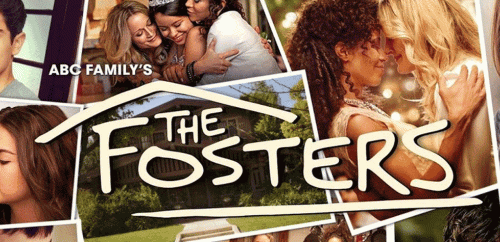The Oscars are coming up soon, but this year the headlines haven’t been all glitz and glam. The lack of nominations for people of color, women and LGBT groups caused quite a stir, and while the Academy responded by promising to increase the diversity of its board of members , the situation has reminded us about the message that comes across when underrepresented groups fail to be recognized in media and entertainment. In another recent headline, Disney Channel’s teen actress of Girl Meets World, Rowan Blanchard, also challenged the status quo on her channel earlier this month on LGBT representation. After explaining in a series of tweets that she is “open to liking any gender” in the future, she made the comment that she’d love to see LGBT portrayals on her show. This leads to the question–how does cable television fare on this topic? Are we caught up with the times with LGBT storytelling in our programming, and how much further do we have to go?
First, it’s worth mentioning that Disney actually did feature an LGBT storyline in 2014 in another one of its sitcoms, Good Luck Charlie, when the network aired an episode about two lesbian mothers despite protests from conservative groups. It was a small step forward, but a good one nonetheless and a breakthrough for the network. But let’s take a closer look at some of the other representation for LGBT on the small screen.
Last fall, GLAAD, a non-profit advocacy group that works to build acceptance for LGBT groups in media and entertainment, released the results of a survey that tracked all scripted television series airing between June 2015 and the end of May 2016. Cable fared better than primetime and streaming services in its representation of LGBT characters across its platform. The survey found 84 regularly appearing LGBT characters on cable programs, up from last year’s 64. Primetime tallied 35 characters and streaming tallied 43 (this was the first year that GLAAD included 23 streaming services in the survey).
According to GLAAD, Showtime and ABC Family are the most LGBT-inclusive networks this year, with 18 regular or recurring LGBT characters on each network. ABC Family’s The Fosters, based on a lesbian couple raising a diverse family and a blend of biological, adopted and foster children, leads the way with seven LGBT characters, including the only transgender man on any of the shows tracked by GLAAD. The Fosters actually made television history when two of its 13-year old male characters kissed, with the show’s creator commenting that it was the youngest same-sex kiss on U.S. television, and meant to mirror the angst and feelings that teenagers experience at that age. Showtime programs Shameless and Penny Dreadful also feature several LGBT characters.
Notably, The Fosters and Shameless just received nominations this week for the 27 annual GLAAD Media Awards in the outstanding drama series category. The awards aim to recognize and applaud media that include and portray issues affecting the LGBT community. Cable networks snagged 27 nominations, more than any other television platform.
There are also documentaries and reality series important to note that are helping to shed more light on the struggles and challenges of the transgender community. Here again, ABC Family makes a statement with its docu-series released last summer, Becoming Us, about a 17-year old boy watching his parent go through a gender transition. And of course there’s I Am Cait, also nominated for a GLAAD Award in the outstanding reality series category, which airs on E! and follows the new Caitlyn Jenner after Bruce Jenner’s gender transition and her relationships with family and friends.
And then there’s Looking, HBO’s comedy series about a group of gay friends living in San Francisco, which also received a GLAAD nomination this year. GLAAD gave a shout out to Looking as being only one of two scripted shows on television that includes an HIV-positive character. (The other one is on How to Get Away with Murder on ABC.)
So while television finds a long road ahead when it comes to including more characters and storylines that reflect the diverse audiences watching, we believe it’s important to recognize the small strides cable is making. Each year, groups like GLAAD and The Walter Kaitz Foundation, cable’s diversity advocate, make it a point to encourage and celebrate diversity within television programming. It’s essential that as content creators and distributors, we continue to work and find ways to serve as catalysts for acceptance and change.
